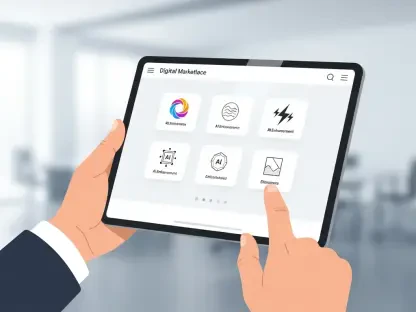Data visualization has always been a complex task, often limited to those with specialized skills in data analysis and visualization languages. However, the landscape is shifting with the advent of DataVisT5, a breakthrough pre-trained language model designed to democratize data visualization. Developed by researchers from PolyU, WeBank Co., Ltd, and HKUST, DataVisT5 represents a significant leap forward by enabling users to create and interpret data visualizations using natural language, eliminating the need for extensive expertise in declarative visualization languages (DVLs). This innovative model integrates advanced capabilities to bridge the gap between textual queries and visual data representation, paving the way for broader accessibility and user-friendliness in the data visualization field.
The Complexity of Data Visualization
Creating effective data visualizations often requires a deep understanding of both visual analysis and domain-specific data. Traditionally, this involves using intricate declarative visualization languages, which can be a barrier for those without specialized knowledge. The complexity of DV tasks extends beyond simple chart creation; it encompasses the ability to accurately interpret and present data in a visually meaningful way. Historically, creating data visualizations was a skill reserved for experts. As data volumes grew, so did the need for more sophisticated tools capable of handling complex datasets. This increased the demand for solutions that could simplify the DV process for non-specialists. DataVisT5 aims to bridge this gap by providing an accessible platform for all users, ensuring that the powerful capabilities of data visualization are not limited to those with specialized technical skills.
The transition from expert-only tools to more accessible solutions marks a significant development in the field. Traditional methods relied heavily on the user’s ability to understand and manipulate complex visualization languages, often requiring extensive training and experience. This often led to a bottleneck, where only a small group of skilled individuals could effectively create and interpret data visualizations. By contrast, DataVisT5 opens up new possibilities for users from diverse backgrounds, enabling them to generate meaningful visual representations of data through natural language interactions. This advancement not only democratizes the process but also fosters greater inclusivity and innovation in how data is analyzed and presented, ultimately leading to more insightful and informed decision-making across various domains.
Evolution of Text-to-Vis Systems
The journey of text-to-vis systems has evolved significantly over the years, making substantial strides from their humble beginnings. Early systems relied heavily on predefined rules or templates to generate visualizations. While functional, these solutions were limited in their ability to handle the diversity of user queries and the complex needs of modern data visualization. More recently, advancements in neural network-based methods have shifted the paradigm. Models like Data2Vis and RGVisNet have employed encoder-decoder architectures and graph neural networks, respectively, to handle the sequence translation tasks involved in visualization generation. These newer models offer greater flexibility and accuracy, setting the stage for DataVisT5’s groundbreaking capabilities, which represent a major leap in the development and deployment of automated data visualization technologies.
Neural network-based methods provide a more nuanced understanding of natural language queries, allowing for more precise and varied visual outcomes. The ability to conceptualize visualization generation as a sequence translation task is particularly impactful, enabling more sophisticated and user-friendly solutions. This evolution mirrors broader trends within artificial intelligence and machine learning, where deep learning techniques have revolutionized numerous applications by enhancing their adaptability and efficacy. DataVisT5 builds on this foundation, leveraging advanced neural architectures and training techniques to offer unprecedented levels of performance and utility in the realm of data visualization. The transformational potential of these methods is underscored by their capacity to bridge the gap between user intent and the visual representation of complex data, facilitating a more intuitive and accessible approach to data analysis.
Integration of Cross-Modal Information
One of DataVisT5’s standout features is its integration of cross-modal datasets, which significantly enhances its functionality and versatility. By building upon the text-centric T5 architecture, DataVisT5 incorporates both text and visual data into a unified framework. This integration allows for seamless transitions between natural language inputs and visual outputs, effectively bridging the gap between textual queries and data visualizations. Cross-modal integration is crucial for providing a holistic and accurate visualization experience, as it ensures the model can understand and process data from different sources. This capability is particularly useful for complex DV tasks that require an in-depth understanding of both the context and the data. By incorporating diverse datasets, DataVisT5 achieves a more comprehensive and nuanced ability to generate and interpret data visualizations.
The use of cross-modal datasets enables DataVisT5 to handle tasks such as text-to-visualization (text-to-vis), visualization-to-text (vis-to-text), and free-form question answering over data visualizations (FeVisQA), significantly enhancing its versatility and application range. This multifaceted functionality positions DataVisT5 as a powerful tool for various data analysis tasks, allowing users to seamlessly interact with data through multiple modalities. The model’s ability to translate textual queries into accurate visual representations and vice versa underscores its innovative approach to democratizing data visualization. By bridging different forms of data input and output, DataVisT5 facilitates a more intuitive user experience, making advanced data visualization techniques accessible to a broader audience. This holistic integration of cross-modal information not only improves the model’s performance but also sets a new standard for future developments in the field of automated data visualization.
Enhanced Pre-Training and Fine-Tuning
DataVisT5 employs a comprehensive pre-training process that merges natural language with data visualization knowledge, ensuring a robust foundation for its innovative capabilities. This process includes techniques like database schema filtration, unified encoding formats, and hybrid pre-training objectives, all designed to improve the model’s overall performance and accuracy. The pre-training phase is critical for equipping the model with the necessary skills to handle a wide range of DV tasks. By incorporating a blend of pre-training objectives, such as span corruption and Bidirectional Dual-Corpus objectives, DataVisT5 ensures a robust foundation for subsequent fine-tuning. This meticulous approach to pre-training enables the model to develop a deep understanding of the intricacies involved in generating and interpreting data visualizations.
After pre-training, the model undergoes multi-task fine-tuning across various DV-related tasks, further enhancing its capabilities. This fine-tuning process adapts the model to specific requirements, improving its ability to deliver high-quality visualizations and interpret data accurately. The result is a model that excels in performance metrics, particularly in complex scenarios where other models have traditionally struggled. DataVisT5’s fine-tuning process ensures that it can handle diverse and intricate DV tasks with precision and reliability. By continually refining its capabilities through rigorous fine-tuning, DataVisT5 achieves new levels of performance and accuracy in automated data visualization, setting it apart from existing methods and solidifying its position as a state-of-the-art model in this field.
Robust Experimental Results
The evolution of text-to-visualization systems has progressed remarkably from their early stages. Initially, these systems relied heavily on defined rules and templates to create visual displays. Though effective, these early solutions struggled to accommodate the diverse needs of users and the sophistication required for modern data visualization. Recent advancements in neural network-based methods have revolutionized this area, shifting the paradigm dramatically. Techniques like Data2Vis and RGVisNet employ encoder-decoder architectures and graph neural networks to manage the sequence translation tasks required for visualization generation. These innovative models bring enhanced flexibility and accuracy, paving the way for the groundbreaking capabilities of DataVisT5, which marks a significant leap in automated data visualization technologies.
Neural network-based methods excel at understanding natural language queries, resulting in more precise and diverse visual outcomes. Visualizing the generation process as a sequence translation task has been particularly revolutionary, enabling more sophisticated and user-friendly interfaces. This progress reflects broader trends in artificial intelligence and machine learning, where deep learning techniques have transformed various applications by improving their adaptability and effectiveness. DataVisT5 builds on this solid foundation, utilizing advanced neural architectures and training techniques to deliver unparalleled levels of performance and utility in data visualization. The transformational impact of these methods is evident in their ability to bridge the gap between user intent and the visual representation of complex data, fostering a more intuitive and accessible approach to data analysis.









